
Blog
True love for great sound unites us.
Blog
True love for great sound unites us.

Radio announcers use it to make their voices sound bigger and more impactful. The so-called "proximity effect" leads to a bass boost in directional microphones. But why does it occur?
As always, our blog posts are fact-checked by audio professionals and engineers to make sure everything is 100% correct.
The proximity effect occurs when a microphone is too close to the sound source. Imagine you are speaking into a microphone. Now, the bass becomes stronger the closer you get to the microphone.
The proximity effect can help to make your voice sound "bigger", but too much bass can make your recording sound muddy. As always, it's about finding the right balance for your context.
Here's a sound sample; notice how pronounced the bass frequencies are.
The proximity effect occurs in various degrees of intensity with different types of microphones (e.g., pressure gradient microphones) and polar patterns. Sometimes, they are also called pickup patterns.
It does not occur at all with the omnidirectional pattern, and it is most pronounced with the figure-8 pattern.
The most commonly used pattern is the cardioid polar pattern, and it has a noticeable proximity effect, as we know from the radio.
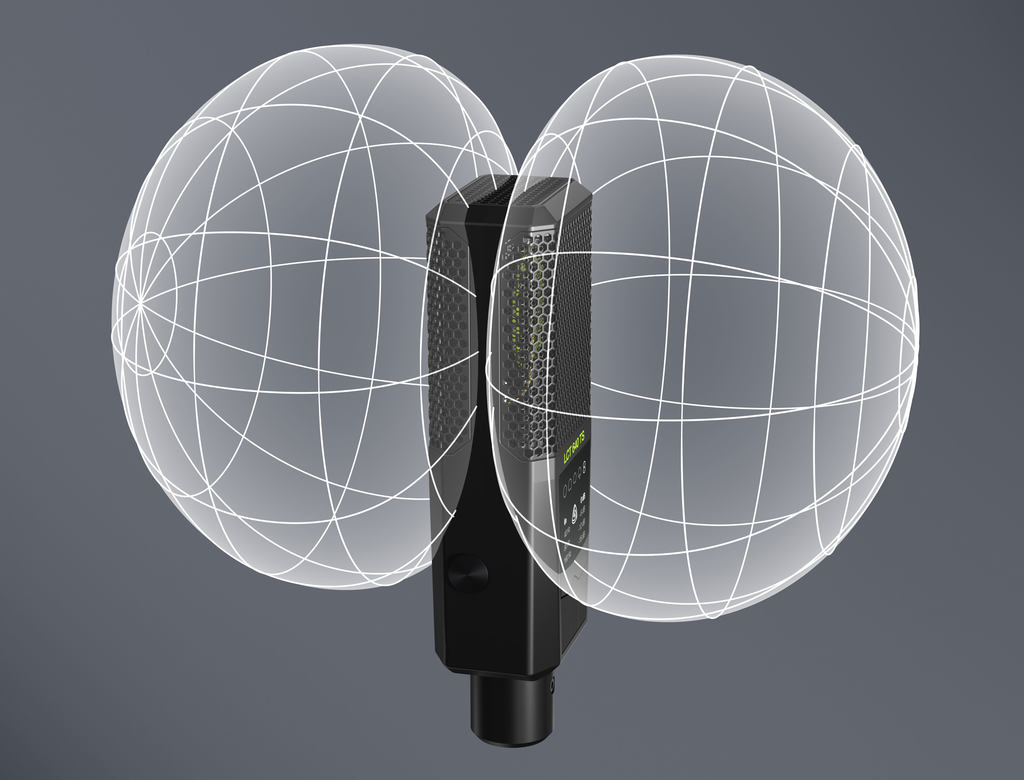
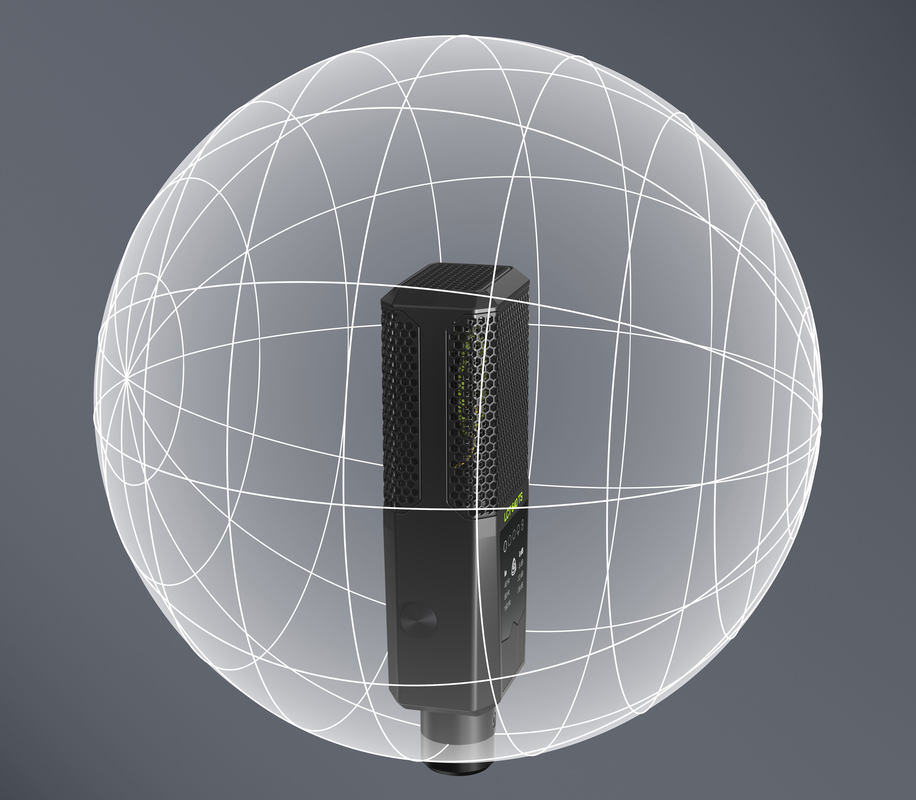
Since the proximity effect varies with different polar patterns, having multiple polar patterns at hand can be a powerful sound-shaping tool for your recordings.
Multi-pattern microphones for your home and studio
When you think your recordings are getting too muddy, there are three easy fixes to compensate for the proximity effect.
1. Increase the distance between the microphone and your sound source or slightly tilt the mic
2. Activate a low-cut filter, either directly on your microphone or in your DAW
3. Try a different polar pattern, e.g., one that is less susceptible to the proximity effect, e.g., omni using a multi-pattern microphone
Some instruments, such as trumpets or pianos, have a particular frequency response or build that makes them immune to the proximity effect.

When recording acoustic guitar or kick drum, you should pay attention, though. You will experience an intense bass increase if you position the microphone directly before the sound hole.
For the kick drum, leave some distance between your microphone and the drumhead to avoid an overly boomy kick, especially when the drum head has no port. If you cut a hole in your drum head, your kick will sound less boomy, have more punch, and less sustain.
The LEWITT RAY microphone allows you to compensate for the proximity effect (and level) automatically with a feature called AURA.
It uses a sensor that detects your distance to the microphone to make the adjustments automatically. As a result, you have flawless vocal takes, which is especially great for podcasts.
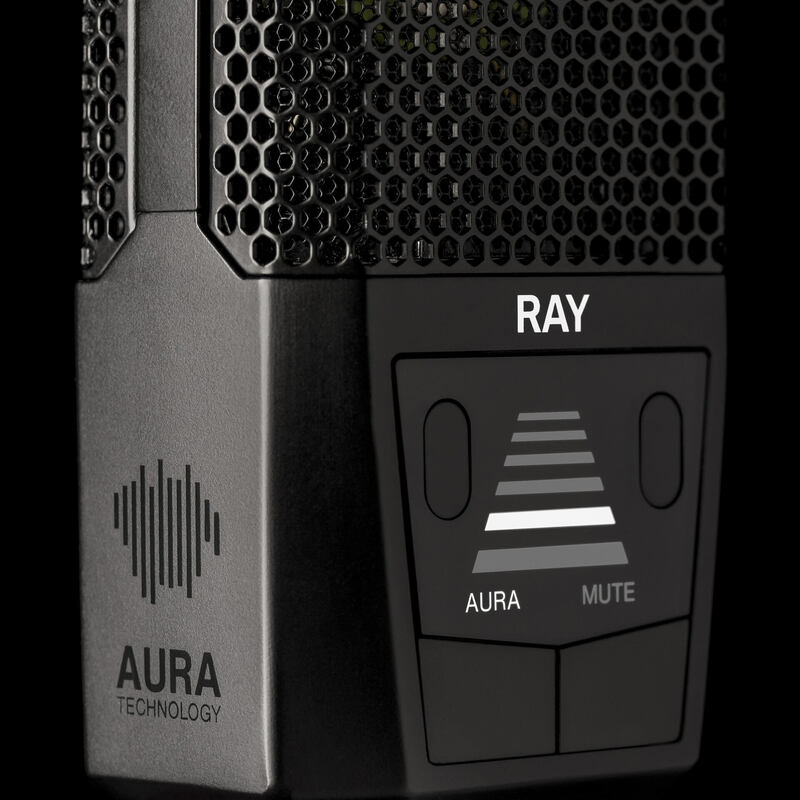
These measurements show how the feature counteracts the proximity effect at different distances. The dotted line reflects the usual proximity behavior; the solid line shows when the RAY AURA feature is turned on and adjusts level and tone.
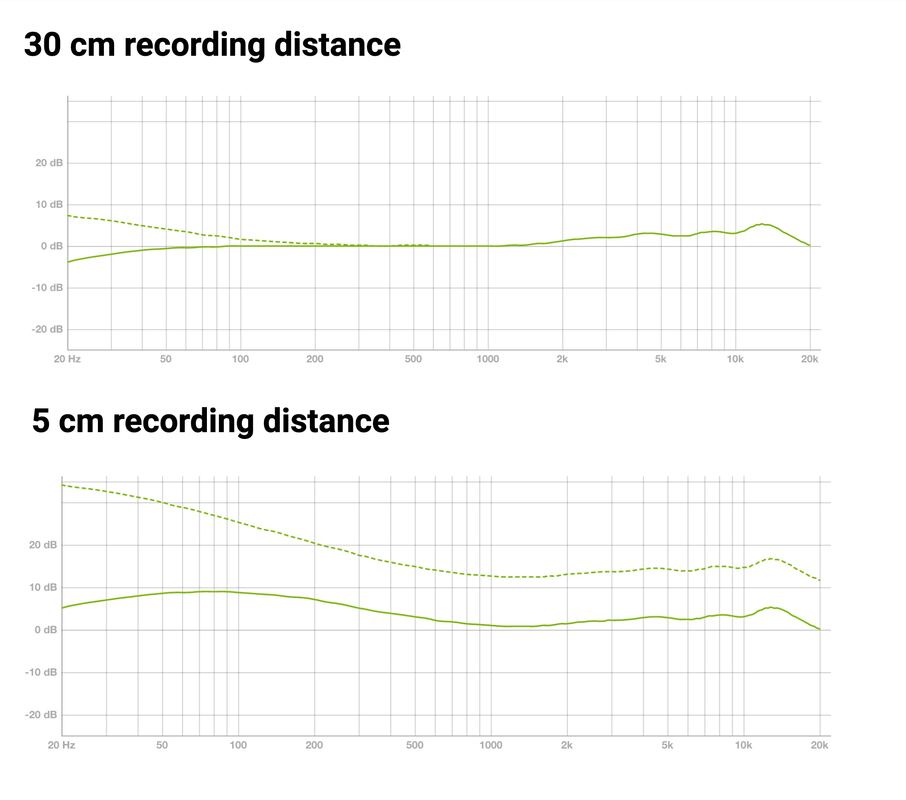
Ok, let's get technical.
Directional microphones respond to differences between the pressure at the front and back of their diaphragms. We generally refer to these as pressure gradient microphones.
When directional microphones are placed in close proximity to a sound source, the output signal is exaggerated at low frequencies.
We refer to this as the ‘proximity effect’, or ‘bass tip-up’, and it is the reason that radio broadcasters often have such ‘deep’ sounding voices or why kick drums sound so ‘boomy’ when recorded at close distances with directional microphones.
The extent to which this effect occurs is dependent upon the type of directional microphone used and its operating principle.
When the sound source is far away, the sound arrives in waves which are generally regular and flat in shape. We refer to these as ‘plane-waves’.
Under these conditions, the resulting ‘pressure gradient’ across the microphone diaphragm is smaller at low frequencies, since the wavelength is large compared to the microphone dimensions.
When the microphone is close to the sound source, i.e. the distance is comparable to the wavelength, the sound arriving looks more like a ‘spherical wave’. Under these conditions, the difference in pressure between the front and back of the microphone diaphragm becomes greater towards low frequencies.
For this reason, we experience an exaggeration of low frequencies when placing directional microphones close to sound sources.
Here, we can see measurements from a large condenser microphone with a cardioid polar pattern. You can see, there is a significant boost in the low frequencies (left side of the graph) at 5 cm compared to a 30 cm recording distance.
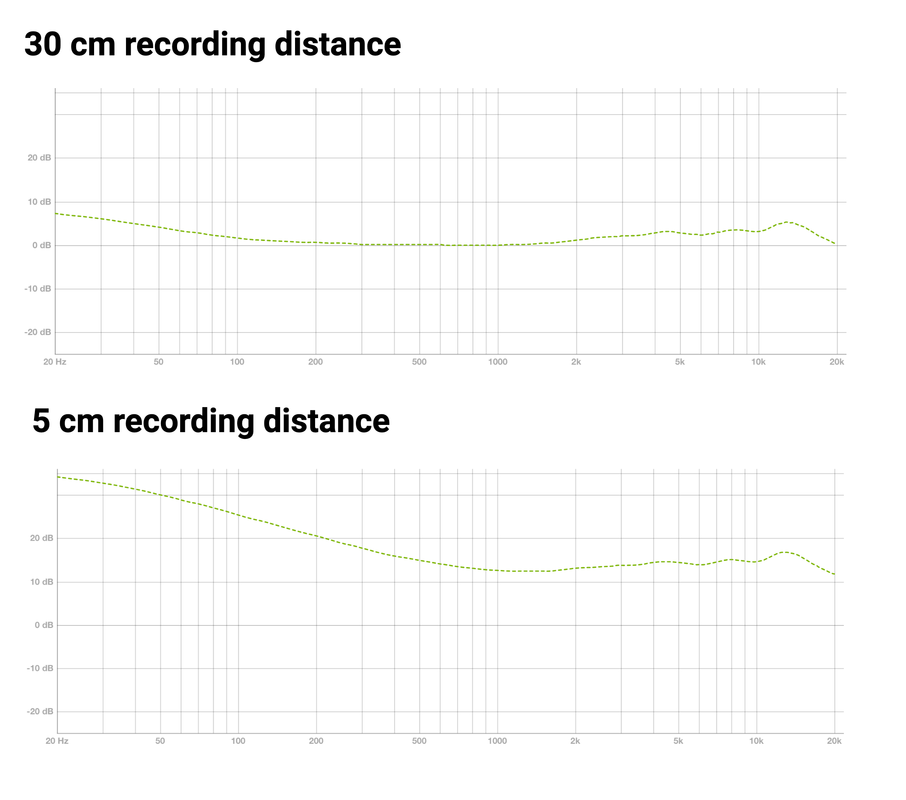
Most omnidirectional microphones respond to changes in pressure on only one side of the microphone diaphragm. We refer to these as pressure-operated microphones. These show no variation in low-frequency behavior when placed near a sound source.
Directional microphones generally respond to the pressure gradient of a sound source.
Figure-8 microphones rely purely on the pressure-gradient principle; therefore, they are most influenced by the proximity effect.
Cardioid microphones rely on a combination of pressure gradient and pressure-operated principles and are, therefore, somewhat less influenced by the proximity effect in direct comparison.
The pressure gradient principle also relates closely to the particle velocity of air, while the pressure operated principle relates to changes in sound pressure.
Wind and wind noise effects typically involve fluctuations of particle velocity, and microphones that operate purely with a pressure gradient principle are more sensitive to this, while microphones that operate primarily with a pressure-operated principle are less affected.
One way to combat the effects of wind noise is to reduce the particle velocity of air getting to the microphone with windshields and pop filters. They reduce the movement of air close to the microphone capsule, improving the quality of your recordings.
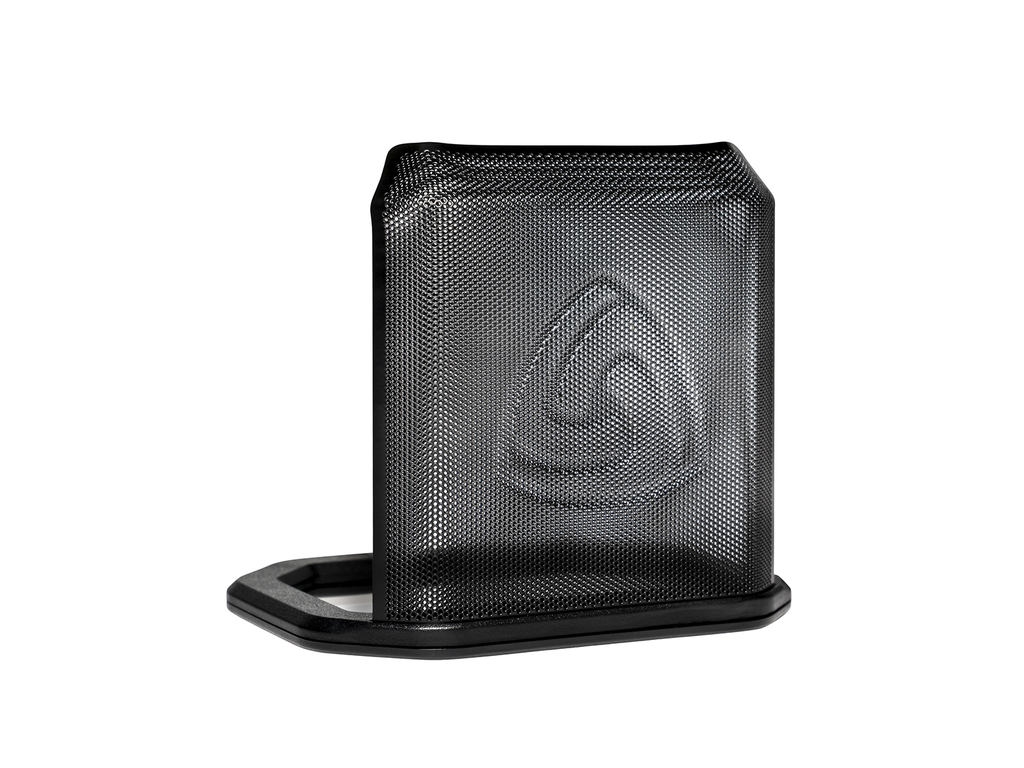
Our multi-pattern microphones